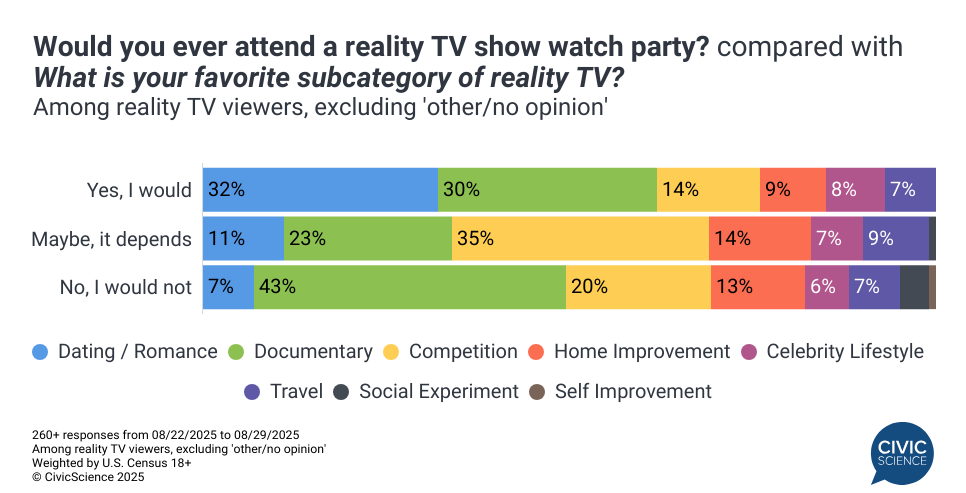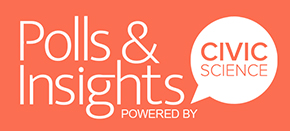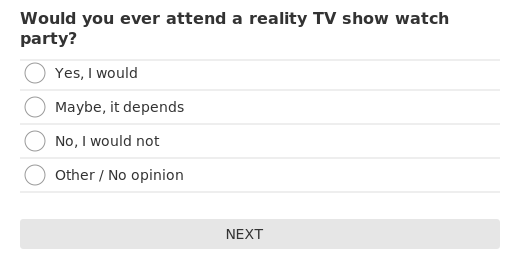Would you ever attend a reality TV show watch party? A CivicScience poll of nearly 3,900 U.S. adults reveals that 42% of Americans show some interest in these communal viewing experiences, with 14% saying they would definitely attend and 28% expressing conditional interest. While the concept remains niche, it has found a dedicated following among specific demographics who embrace social television consumption.
Age emerges as the strongest predictor of watch party enthusiasm. Young adults 18-29 lead the charge, with 58% expressing openness to attending—24% saying yes outright and 34% conditionally interested. While interest declines with age, the enthusiasm remains noteworthy across generations: 48% of 30-44 year-olds show interest, 34% among 45-64 year-olds, and even 19% of seniors 65+. This means nearly one in five older Americans would consider attending, suggesting watch parties have broader appeal than their reputation as purely young phenomena might suggest.
Gender differences prove surprisingly modest, with women showing slightly higher interest at 49% versus 43% for men. This relative parity indicates that watch party appeal transcends traditional reality TV viewing stereotypes.
The type of reality programming strongly influences watch party interest. Among definite attendees, dating and romance shows dominate at 32%, followed by documentary-style reality at 30%. However, those with conditional interest prefer competition shows at 35%, suggesting viewers might attend for high-stakes programming like talent competitions. This genre split reveals distinct viewing motivations—romance fans seek communal emotional experiences, while competition enthusiasts want shared excitement around outcomes.

Streaming habits strongly correlate with watch party enthusiasm. Among interested viewers, 70% actively use services like Paramount+, compared to just 35% of those opposed to watch parties. This digital engagement extends to content preferences: watch party enthusiasts favor binge-watching, with 53% preferring all episodes released at once versus 21% who want weekly releases. This immediate gratification aligns with social viewing desires to experience and discuss content together in real-time.
The connection between watch party interest and broader digital engagement proves particularly striking. Among those open to reality TV watch parties, 67% are likely to subscribe to new sports streaming services, compared to only 18% of those opposed. This suggests watch party enthusiasts represent a broader category of socially-oriented, streaming-native consumers who view all content as potentially communal.
What emerges is reality TV watch parties as markers of evolving entertainment consumption. For younger, digitally-engaged Americans, television increasingly becomes a social activity designed for shared experience and real-time discussion. While still niche, these viewing experiences reflect a fundamental shift in how a significant portion of Americans—particularly younger viewers—approach media consumption as inherently social rather than solitary entertainment.
Love taking polls? Sign up to participate in the Poll of the Day here.
This article’s data comes solely from CivicScience’s database, which contains nearly 700,000 poll questions and 5 billion consumer insights.


